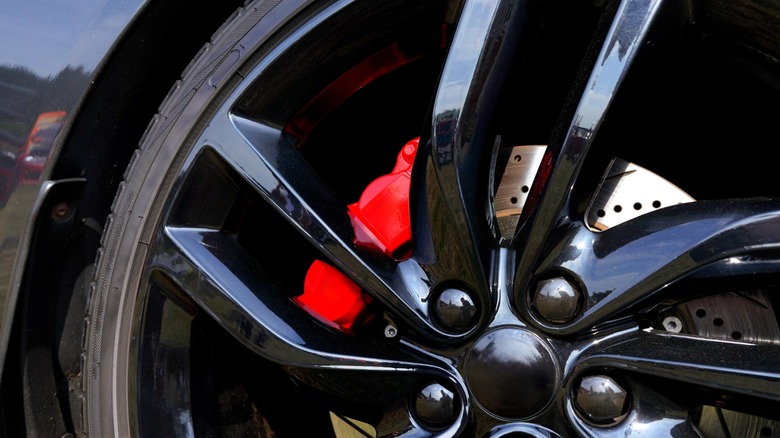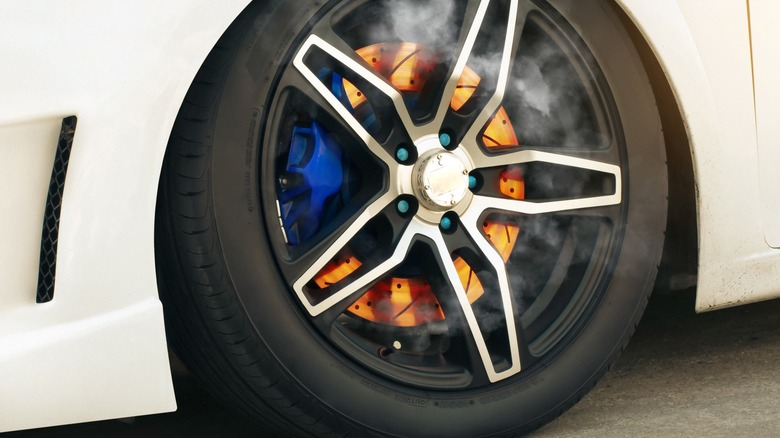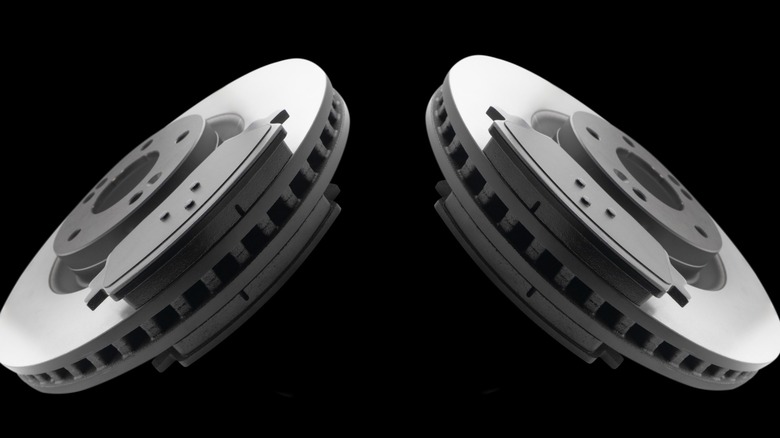Why High-Performance Cars Use Drilled And Slotted Rotors
High-performance cars are far from your average Prius or Civic. These cars aren't typically built to meander through city traffic or simply help you commute to the grocery store. No, these are built to race, corner hard, and stop on a dime. Every part of their engineering reflects that purpose, especially the brakes.
It's one thing to go fast, but it's equally important to be able to stop quickly. Regular brake pads don't cut it — that's why the rotors on the brakes of performance cars have holes or grooves on them. You may have noticed those brakes because they look aggressive and sporty, but it's not just for looks. Stopping a car at high speeds generates a lot of heat on the rotors and the holes help to dissipate that heat, while the slotted grooves improve braking performance and friction by channeling dust and gas away from the rotors.
What's the science behind drilled and slotted rotors?
To put it simply, cars stop by converting kinetic energy into heat through friction. When you hit the brakes, the brake pads clamp down on the spinning rotors, using their rough surface to slow the wheels. This process generates a tremendous amount of heat — especially during high-speed, repeated, or aggressive braking. In performance cars, which are both heavier on the throttle and harder on the brakes, this heat can quickly exceed what standard braking systems are designed to handle. That's why you'll often see race cars with glowing, red-hot brake discs.
Drilled rotors dissipate heat by allowing more air flow through the disc, cooling it more efficiently. Heat is the enemy of braking performance; it can reduce friction, cause the brake pad materials to degrade, and release gases or even vaporized moisture. This gas can form a thin cushion between the pad and rotor, reducing contact and braking power, leading to a phenomenon known as brake fade. Slotted rotors help by channelling dust and unwanted gas away, allowing for more consistent bite and performance. While you can have one with both features, you can see more on the difference between drilled and slotted rotors in our dedicated piece on it.
Why aren't these performance rotors on all cars?
By now, you must be wondering why all cars don't have these drilled and slotted rotors. After all, better performance is good even if all you do is school and grocery runs.
For starters, it's not as cheap as standard rotors, and money dictates the industry a lot more than we care to admit. Secondly, our brakes simply don't get hot enough to require spending money on that kind of brake pads. Unless you're towing, street racing, or descending long steep roads regularly, there's hardly ever going to be a situation where your brakes will see the kind of stress that needs that.
Lastly, and counter-intuitively, these performance brakes aren't as durable as regular brake rotors. They are more prone to warping and cracking due to the drilled holes, which is why automakers usually go for vented brake discs for more street-worthy performance instead of drilled rotors. But that's not even all of it; drilled and slotted rotors will cause your brake pads to wear out faster. Increased bite and grip for the brake pads means more unnecessary wear, which means you'll have to spend more money maintaining your car.


